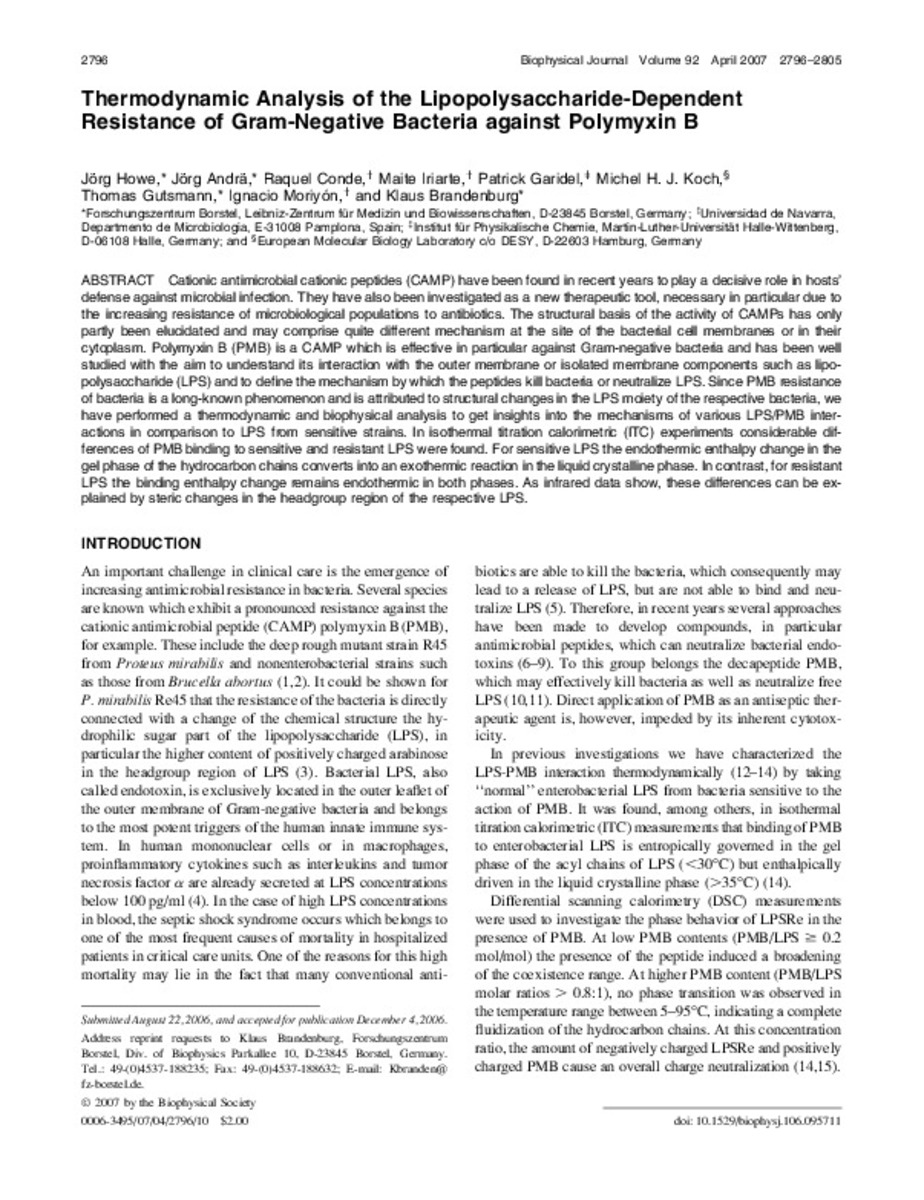Thermodynamic analysis of the lipopolysaccharide-dependent resistance of gram-negative bacteria against polymyxin B
Keywords:
Antimicrobial peptides
Salmonella Minnesota
Synchrotron radiation
Biological activity
Escherichia coli
Divalent cations
Lipid A
Temperature
Mutants
Rough
Citation:
Howe J, Andra J, Conde R, Iriarte M, Garidel P, Koch MH, et al. Thermodynamic analysis of the lipopolysaccharide-dependent resistance of gram-negative bacteria against polymyxin B. Biophys J 2007; 92(8); 2796-2805.
Statistics and impact
0 citas en

0 citas en

Items in Dadun are protected by copyright, with all rights reserved, unless otherwise indicated.








